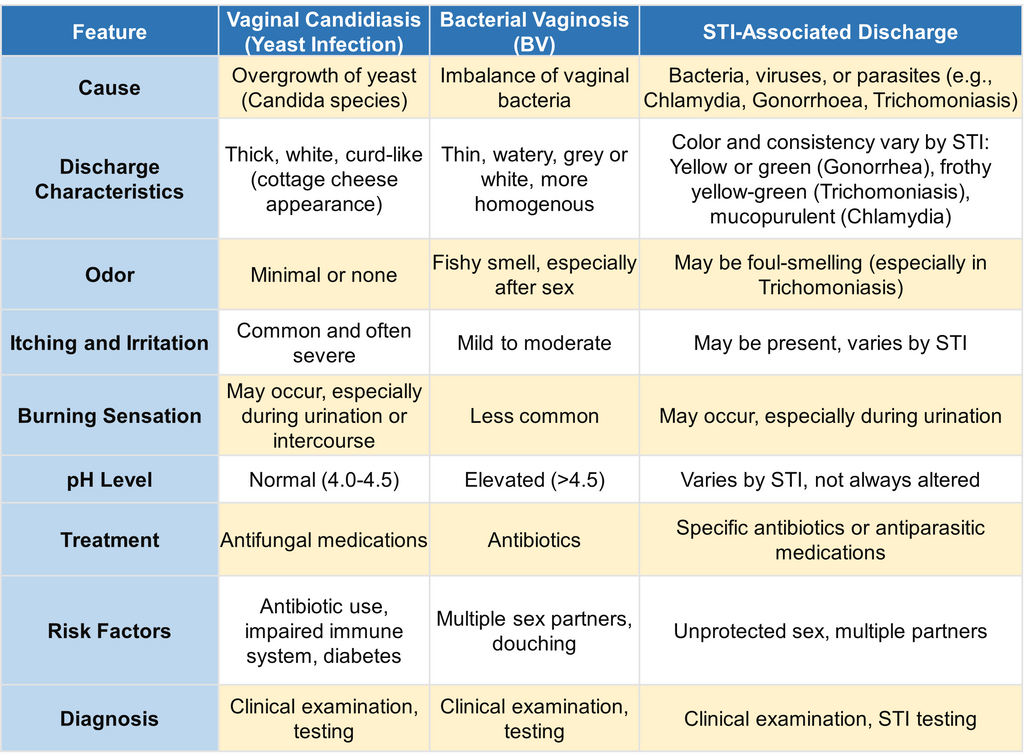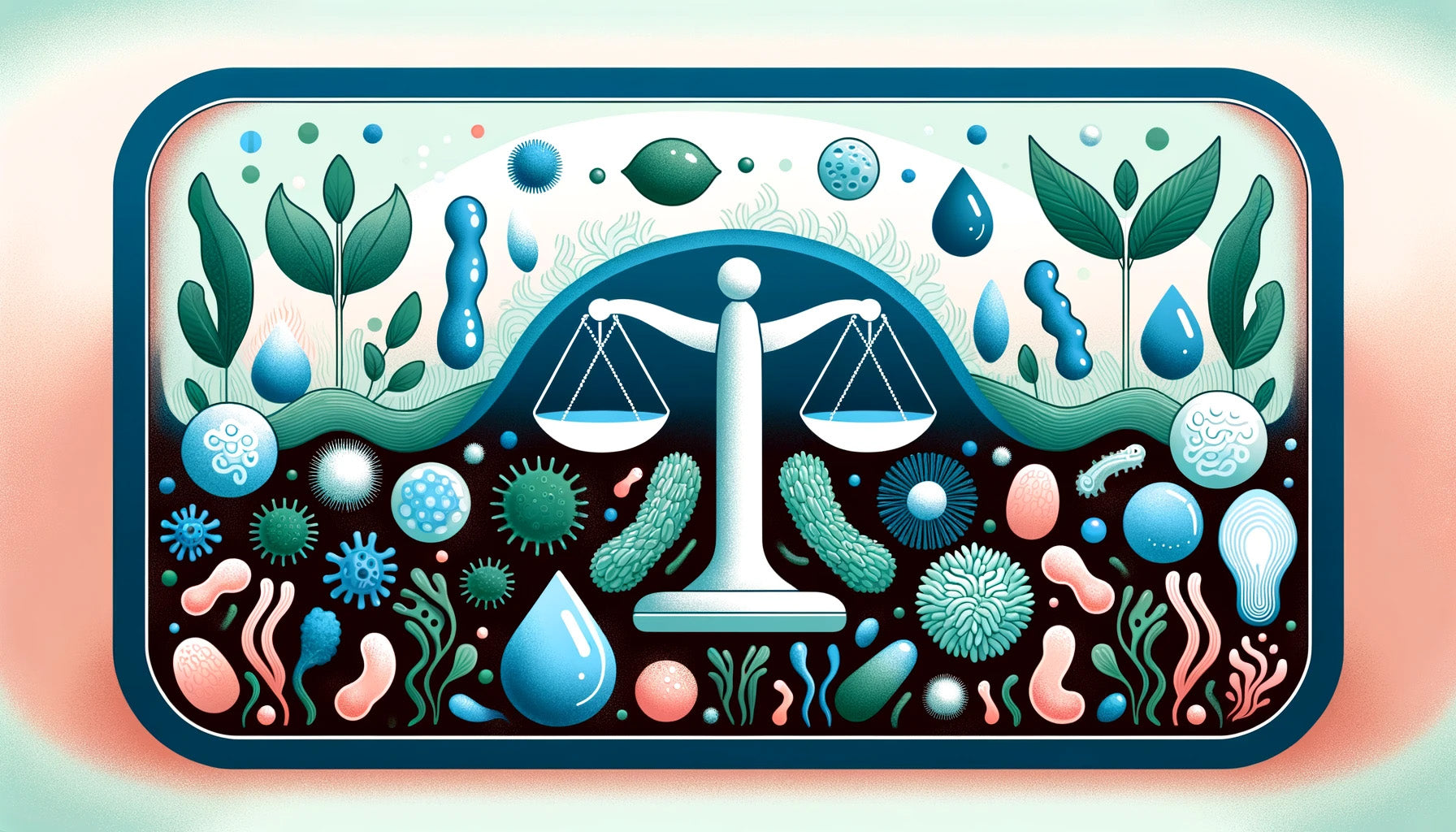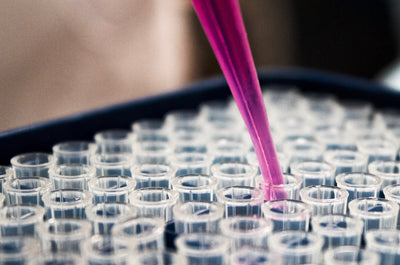Contents:
- Normal Vaginal Discharge
- Types of Vaginal Discharge
- Distinguishing Discharge Due to Thrush, Bacterial Infections and STIs"
- FAQs
Normal Vaginal Discharge
Vaginal discharge can be normal and varies during your menstrual cycle. Normal physiological vaginal discharge is a regular occurrence for women and is an important part of the female reproductive system's self-cleaning mechanism. This discharge helps to clear away dead cells and bacteria, maintaining the health of the vagina and preventing infections. Here's what normal vaginal discharge typically looks like:
- Colour and Consistency: The colour and consistency of normal vaginal discharge can vary throughout the menstrual cycle. It is usually clear or milky white. Around the time of ovulation, discharge may become clearer, thinner, and more slippery, similar to raw egg whites.
- Smell: Normal discharge may have a mild, subtle odour or no odour at all. The smell can vary depending on the individual but should not be foul or fishy.
- Amount: The amount can also vary throughout the cycle, with many women experiencing more discharge in the middle of their cycle, around ovulation.
It's entirely normal for women to have some amount of vaginal discharge. The presence and amount of discharge can be influenced by various factors, including the menstrual cycle, hormonal changes, pregnancy, sexual arousal, and the use of hormonal contraceptives.
However, changes in the colour, consistency, smell, or amount of discharge can sometimes indicate an infection or other condition that may require medical attention. For example, discharge that becomes yellow or greenish, very thick or chunky, or develops a strong, unpleasant smell could signal an issue like a yeast infection, bacterial vaginosis, or a sexually transmitted infection (STI).
Having vaginal discharge is a normal and healthy part of being a woman. Being familiar with your own typical discharge pattern can help in noticing when something might be amiss. If something has changed, then that should be a reason to have vaginal swab test.
Types of Vaginal Discharge
Normal Vaginal Discharge: It's usually clear or milky and may have a mild smell.
Yeast Infection Discharge: This looks like cottage cheese. It's usually thick and white.
Ovulation Discharge: Around ovulation, discharge is clear and stretchy.
BV Discharge: Bacterial vaginosis causes thin, grey, fishy-smelling discharge.
Brown Discharge: This may happen right after periods and is just cleaning out your vagina. It can also be a sign of an infection.
Green or Yellow Discharge: Indicates a possible infection. It's best to be tested.
Distinguishing Discharge Due to Thrush, Bacterial Infections and STIs

FAQs
What does thrush look like?
Thrush discharge is thick, white, and can be clumpy. It can cause itching.
Is green vaginal discharge normal?
No, greenish discharge may indicate an infection.
What about yellow discharge during pregnancy?
Yellow discharge may not be a concern unless it's accompanied by itching or smell.
Can normal vaginal discharge be smelly?
Yes, but a strong, bad smell can signal an infection.
Is white discharge everyday normal?
Yes, clear to white discharge is normal for most women.
How can I stop smelly discharge?
Good hygiene practices and seeing a doctor for advice can help.
What indicates vaginal discharge during pregnancy?
It's common to have more discharge. It's usually white and mild-smelling.
What does a pink discharge signify in early pregnancy?
Pink discharge can be normal, but it's wise to consult a doctor.
How to treat excessive vaginal discharge?
Treatment depends on the cause. A doctor can provide the best advice.





